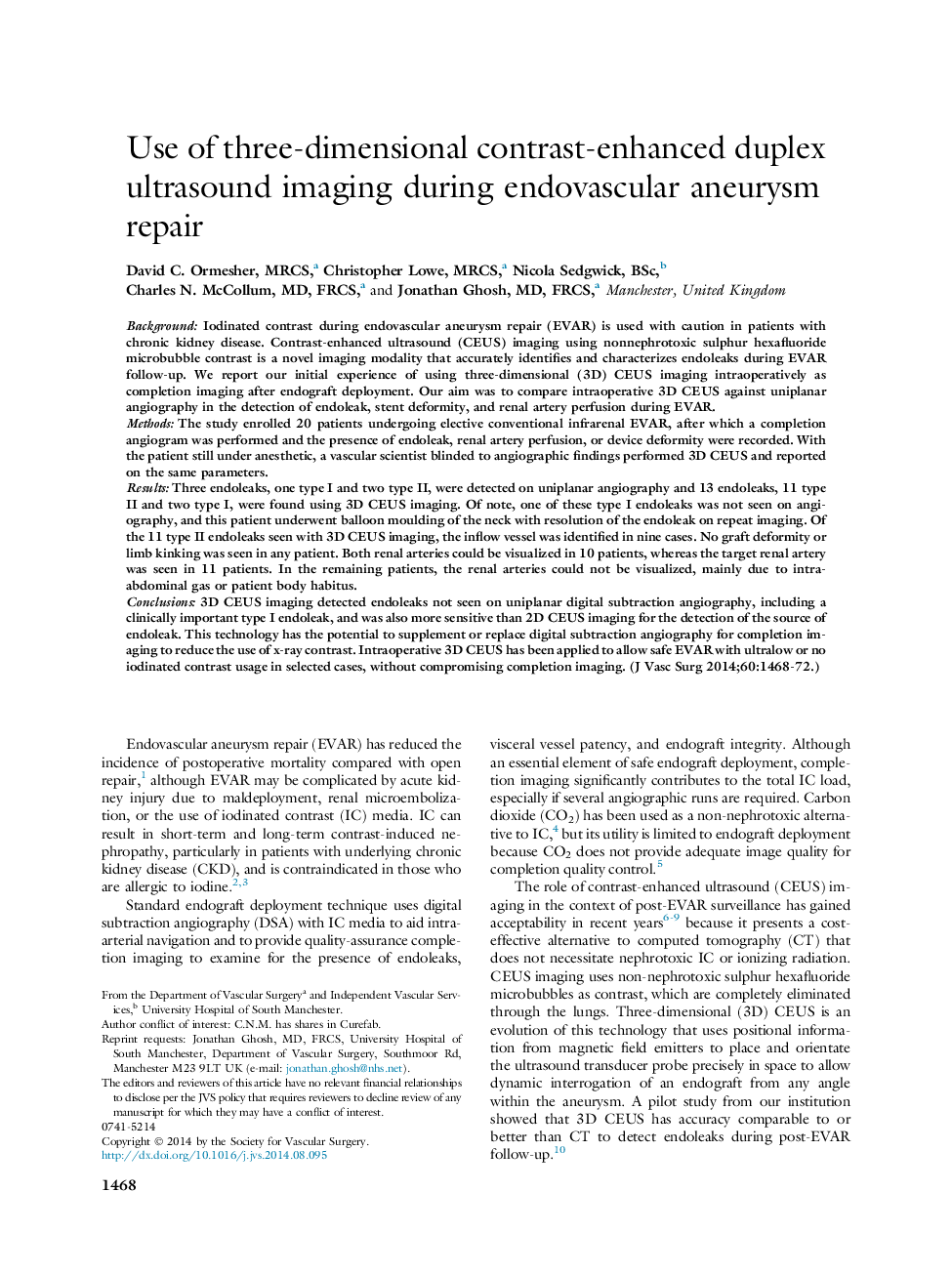| کد مقاله | کد نشریه | سال انتشار | مقاله انگلیسی | نسخه تمام متن |
|---|---|---|---|---|
| 2988371 | 1578815 | 2014 | 5 صفحه PDF | دانلود رایگان |
BackgroundIodinated contrast during endovascular aneurysm repair (EVAR) is used with caution in patients with chronic kidney disease. Contrast-enhanced ultrasound (CEUS) imaging using nonnephrotoxic sulphur hexafluoride microbubble contrast is a novel imaging modality that accurately identifies and characterizes endoleaks during EVAR follow-up. We report our initial experience of using three-dimensional (3D) CEUS imaging intraoperatively as completion imaging after endograft deployment. Our aim was to compare intraoperative 3D CEUS against uniplanar angiography in the detection of endoleak, stent deformity, and renal artery perfusion during EVAR.MethodsThe study enrolled 20 patients undergoing elective conventional infrarenal EVAR, after which a completion angiogram was performed and the presence of endoleak, renal artery perfusion, or device deformity were recorded. With the patient still under anesthetic, a vascular scientist blinded to angiographic findings performed 3D CEUS and reported on the same parameters.ResultsThree endoleaks, one type I and two type II, were detected on uniplanar angiography and 13 endoleaks, 11 type II and two type I, were found using 3D CEUS imaging. Of note, one of these type I endoleaks was not seen on angiography, and this patient underwent balloon moulding of the neck with resolution of the endoleak on repeat imaging. Of the 11 type II endoleaks seen with 3D CEUS imaging, the inflow vessel was identified in nine cases. No graft deformity or limb kinking was seen in any patient. Both renal arteries could be visualized in 10 patients, whereas the target renal artery was seen in 11 patients. In the remaining patients, the renal arteries could not be visualized, mainly due to intra-abdominal gas or patient body habitus.Conclusions3D CEUS imaging detected endoleaks not seen on uniplanar digital subtraction angiography, including a clinically important type I endoleak, and was also more sensitive than 2D CEUS imaging for the detection of the source of endoleak. This technology has the potential to supplement or replace digital subtraction angiography for completion imaging to reduce the use of x-ray contrast. Intraoperative 3D CEUS has been applied to allow safe EVAR with ultralow or no iodinated contrast usage in selected cases, without compromising completion imaging.
Journal: Journal of Vascular Surgery - Volume 60, Issue 6, December 2014, Pages 1468–1472
